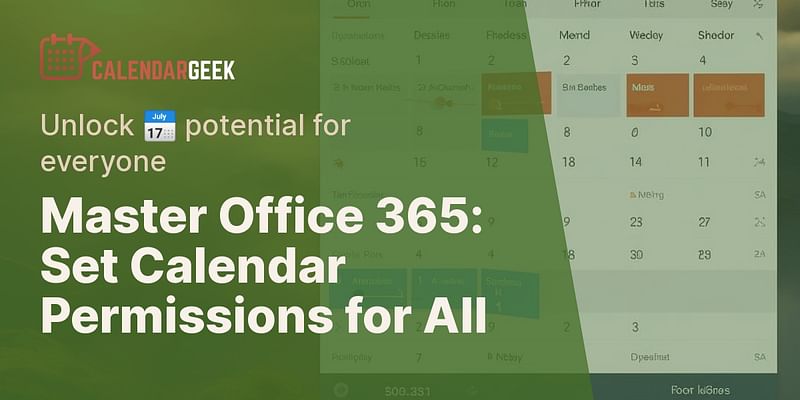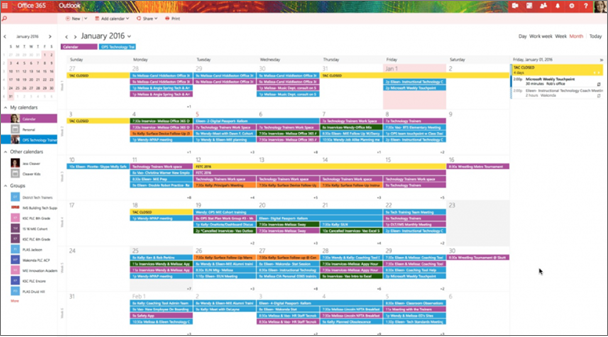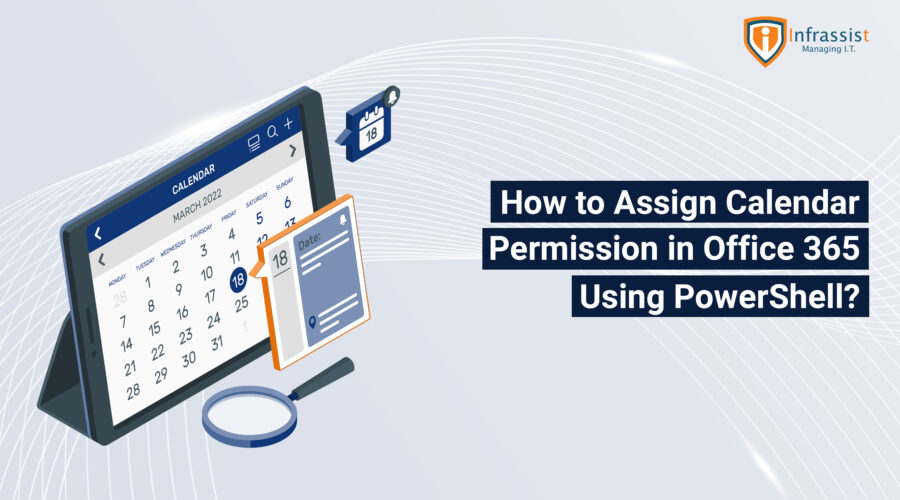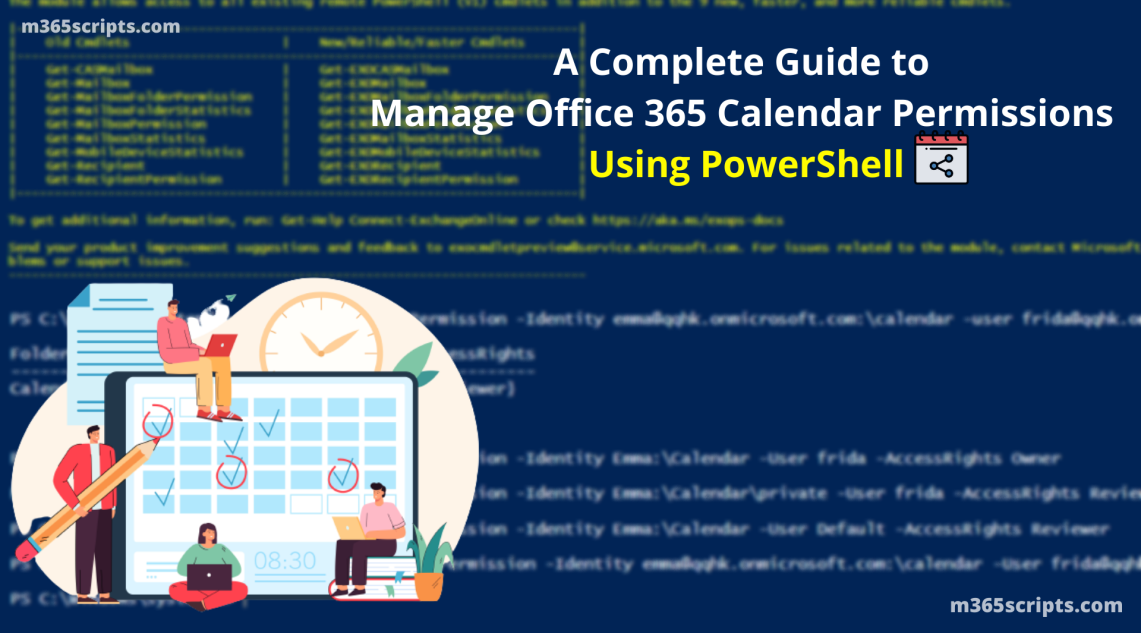Mastering Workplace 365 Group Calendar Permissions: A Complete Information
Associated Articles: Mastering Workplace 365 Group Calendar Permissions: A Complete Information
Introduction
With enthusiasm, let’s navigate by means of the intriguing subject associated to Mastering Workplace 365 Group Calendar Permissions: A Complete Information. Let’s weave fascinating info and provide contemporary views to the readers.
Desk of Content material
Mastering Workplace 365 Group Calendar Permissions: A Complete Information

Workplace 365 Teams present a strong collaboration platform, and the shared calendar is a central element of their performance. Nonetheless, successfully managing permissions on this shared calendar is essential for sustaining productiveness and information safety. This text delves into the intricacies of Workplace 365 Group calendar permissions, exploring totally different permission ranges, how they’re utilized, and greatest practices for managing them inside your group.
Understanding the Fundamentals: Group Membership and Calendar Entry
The muse of Workplace 365 Group calendar permissions lies in group membership. By default, members of an Workplace 365 Group have entry to the group’s shared calendar. This entry degree, nonetheless, might be personalized and refined to satisfy particular wants. The default permissions granted to group members sometimes embody:
- Viewing: Members can see all appointments and occasions scheduled on the calendar.
- Creating: Members can create new appointments and occasions on the calendar.
- Modifying: Members can modify or delete appointments and occasions they’ve created, and generally occasions created by others (relying on additional permission settings).
- Delegating: Members can probably delegate entry to others (relying on administrative settings).
Permission Ranges Past Group Membership:
Whereas group membership gives a fundamental degree of entry, Workplace 365 affords granular management past this default setting. You may grant entry to the calendar to people or teams who’re not members of the Workplace 365 Group itself. That is achieved by means of a number of strategies:
-
Sharing the Calendar: The best methodology is to share the calendar instantly with particular customers or teams. This lets you grant particular permissions (like "Can view," "Can edit," or "Can view and edit") to exterior customers or inner customers not a part of the group. That is achieved by means of the calendar’s sharing settings inside Outlook or Outlook on the net.
-
Utilizing SharePoint Permissions: The Workplace 365 Group’s related SharePoint web site additionally influences calendar entry. If a consumer has entry to the SharePoint web site, they could not directly acquire entry to the calendar, relying on the location’s permission settings. This could be a potential safety vulnerability if not rigorously managed. Directors want to make sure SharePoint permissions align with the specified calendar entry.
-
Delegating Entry: Group homeowners or calendar managers can delegate entry to particular people. This permits designated people to handle appointments on behalf of the group, as an example, scheduling conferences or managing bookings. The extent of entry granted to the delegate might be personalized.
-
Function-Primarily based Entry Management (RBAC): For bigger organizations, RBAC affords a extra refined method. This permits directors to assign particular roles with predefined permission units, streamlining administration and making certain constant entry management throughout a number of teams and calendars.
Granular Permission Management inside Outlook and Outlook on the Net:
When sharing a calendar, Outlook and Outlook on the net present a spread of permission ranges:
-
Reviewer: This permission permits the consumer to view the calendar however not make any adjustments. That is perfect for holding stakeholders knowledgeable with out granting modifying rights.
-
Editor: This permission permits the consumer to view and edit appointments and occasions on the calendar. That is appropriate for collaborators who have to actively handle the calendar.
-
Can view and edit: This selection combines viewing and modifying permissions.
-
Customized Permissions: In some instances, you’ll be able to outline customized permissions, permitting for much more granular management over who can entry and modify particular features of the calendar.
Finest Practices for Managing Workplace 365 Group Calendar Permissions:
Efficient administration of Workplace 365 Group calendar permissions is vital for safety and productiveness. Think about these greatest practices:
-
Precept of Least Privilege: Grant solely the minimal obligatory permissions to every consumer or group. Keep away from granting extreme entry rights, as this will increase the danger of unauthorized modifications or information breaches.
-
Common Permission Opinions: Periodically overview calendar permissions to make sure they continue to be applicable. Take away entry for customers who now not require it.
-
Clear Communication: Talk clearly with customers about their calendar entry ranges and obligations. This helps forestall confusion and ensures everybody understands their roles.
-
Centralized Administration: If attainable, centralize the administration of calendar permissions to make sure consistency and simplify administration. This would possibly contain utilizing PowerShell scripts or different automation instruments.
-
Exterior Sharing Concerns: Be cautious when sharing calendars with exterior customers. Make sure you perceive the implications of granting entry to people outdoors your group and implement applicable safety measures.
-
Auditing and Logging: Make the most of Workplace 365’s auditing capabilities to trace adjustments to calendar permissions and establish potential safety breaches. Often overview audit logs to take care of a document of entry actions.
-
Use of Teams Strategically: As a substitute of granting particular person permissions to many customers, think about creating smaller, extra specialised teams with particular calendar entry rights. This simplifies administration and improves safety.
-
Coaching and Consciousness: Present coaching to customers on applicable calendar utilization and the significance of securing their calendars. Elevate consciousness about phishing makes an attempt and different safety threats.
-
Leverage PowerShell: For superior management and automation, make the most of PowerShell cmdlets to handle calendar permissions programmatically. That is notably helpful for large-scale deployments and sophisticated permission buildings.
Troubleshooting Widespread Permission Points:
Sometimes, it’s possible you’ll encounter points with calendar permissions. Widespread issues and options embody:
-
Consumer can not entry the calendar: Confirm the consumer’s group membership and sharing permissions. Verify for any conflicting permissions from SharePoint or different sources.
-
Consumer can not edit appointments: Make sure the consumer has the suitable "Editor" or "Can view and edit" permission.
-
Calendar synchronization issues: Verify the consumer’s Outlook settings and guarantee their mailbox is correctly configured. Think about restarting Outlook or clearing the cache.
Conclusion:
Workplace 365 Group calendar permissions provide a strong but complicated system for managing entry to shared calendars. By understanding the totally different permission ranges, using greatest practices, and addressing frequent points proactively, organizations can successfully leverage the collaborative energy of Workplace 365 Teams whereas sustaining a safe and productive surroundings. Do not forget that proactive administration, common opinions, and applicable coaching are key to making sure profitable and safe utilization of those worthwhile collaboration instruments. Using a mix of default group permissions, granular sharing choices, and superior instruments like PowerShell will help you tailor your calendar entry to suit the precise wants of your group and its customers.








Closure
Thus, we hope this text has supplied worthwhile insights into Mastering Workplace 365 Group Calendar Permissions: A Complete Information. We hope you discover this text informative and helpful. See you in our subsequent article!